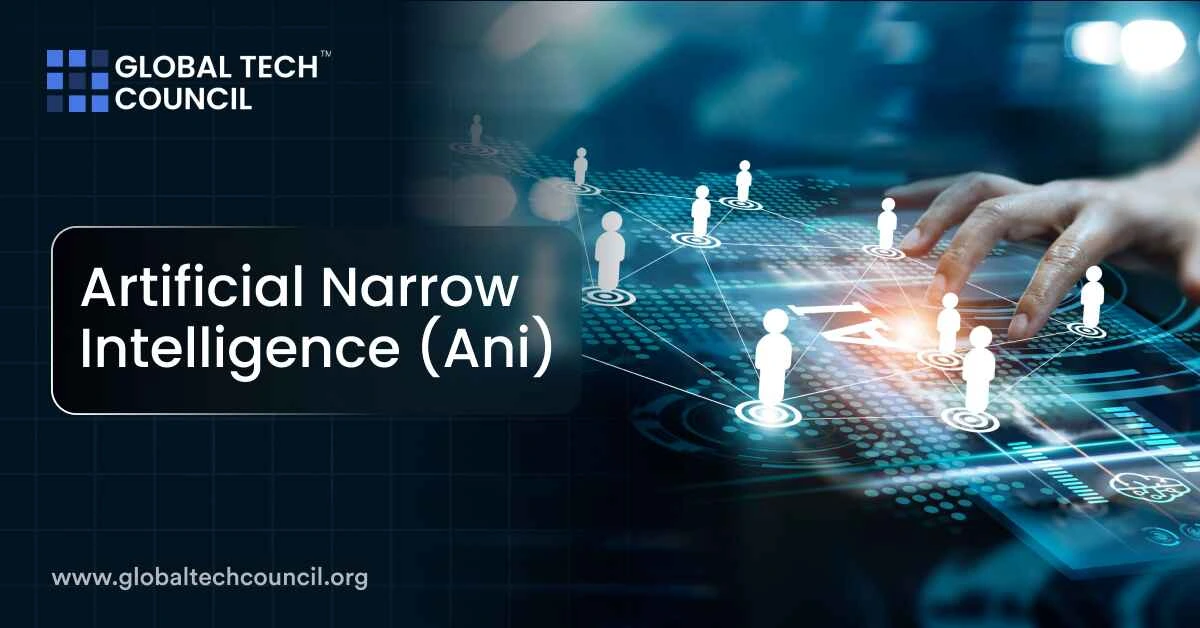Artificial Narrow Intelligence (ANI), commonly referred to as “Weak AI,” is designed to perform well in particular tasks. Its focus is on handling specific jobs efficiently. Unlike more complex AI types, such as Artificial General Intelligence (AGI), ANI remains confined to predefined tasks within a limited scope. Even though it has boundaries, ANI plays a significant role in various technologies we use regularly.
What is ANI?
ANI is a form of AI created to complete particular tasks or a narrow group of tasks with great efficiency. It operates based on set algorithms and rules. Unlike AGI, which is still a theoretical concept and would involve human-like intelligence, ANI is already in wide use. Its primary function is to handle specific duties—like translating languages or recognizing images—without being able to go beyond its programming.
ANI doesn’t actually “understand” what it is doing. It follows patterns from the data it has been trained with, enabling it to complete tasks accurately. However, it lacks broader awareness or the ability to adapt outside its programmed limits.
How ANI Works
ANI relies on machine learning, a method that allows AI systems to get better at tasks through experience. These systems analyze large datasets to find patterns and figure out how to respond to various inputs. This learning method allows them to get better over time.
For instance, virtual assistants such as Siri or Alexa are good examples. However, they don’t actually comprehend human language. Instead, they have been trained to recognize patterns in speech and link those patterns to predefined responses. Likewise, the recommendation engines on services like Netflix track your viewing habits and suggest content based on patterns in the data. These systems don’t “know” what you like; they just predict your preferences based on previous behavior.
ANI in Everyday Life
You might not realize it, but you’re probably interacting with ANI more often than you think. Common examples include:
- Virtual Assistants: Siri, Alexa, and Google Assistant are typical examples of ANI. They perform tasks like setting reminders, responding to voice commands, and controlling smart home gadgets. Their abilities are, however, limited to what they are programmed to handle.
- Recommendation Engines: Platforms like Netflix or Spotify use ANI to recommend shows, movies, or music based on your preferences. These systems track your habits and offer personalized suggestions, based on patterns in your activity.
- Fraud Detection: Many financial institutions rely on ANI for detecting fraudulent activities. These algorithms analyze vast amounts of data to flag any unusual patterns, helping banks and credit card companies prevent fraud.
- Language Translation: Tools like Google Translate use ANI to convert text from one language to another. These services rely on machine learning models that analyze massive multilingual datasets, allowing them to provide relatively accurate translations within certain boundaries.
Key Features of ANI
- Task-Specific: ANI excels at one job or a small set of closely related jobs. It cannot go beyond its defined scope.
- Lack of Awareness: ANI doesn’t have awareness or human-like thought. It follows data-driven instructions and cannot think independently.
- Learning from Data: ANI improves through exposure to data. As it processes more data, it becomes better at performing its specific task accurately. For example, a recommendation engine refines its suggestions as it gathers more information about user behavior.
ANI vs. AGI
It’s essential to distinguish ANI from AGI. While ANI is limited to specific tasks, AGI could learn and apply intelligence to many tasks, much like a human can. AGI remains a future concept, while ANI is already in place and used in different industries.
One key difference is that AGI would be able to transfer knowledge across various domains, whereas ANI remains strictly confined to the task it was designed for. While ANI’s inability to generalize is a limitation, it also means that it can be more precise and reliable in its specific area.
Pros and Cons
Benefits:
- Efficiency: ANI works through data much quicker than humans and can manage repetitive tasks with high accuracy.
- Cost Savings: In fields like healthcare, ANI assists in diagnosing conditions, cutting down on time and labor for professionals.
- Improved Accuracy: ANI’s specialization in certain tasks often leads to better accuracy, especially in fields like fraud detection and predictive analytics.
Limitations:
- Lack of Flexibility: ANI can’t perform tasks it hasn’t been trained for. For instance, a system for recognizing faces can’t handle voice recognition without being reprogrammed.
- Data Reliance: ANI’s performance is only as good as the data it processes. Poor-quality data can lead to errors.
Applications of ANI in Different Fields
- Healthcare: ANI helps doctors analyze medical data and images. It can quickly identify patterns in large sets of information, aiding in early diagnosis and treatment planning.
- Finance: ANI algorithms are commonly used for assessing credit and managing risk. These systems help financial institutions make decisions based on data, minimizing the possibility of errors.
- Manufacturing: ANI-driven robots and systems enhance production processes by assembling products or handling quality control tasks. This leads to greater efficiency and fewer mistakes.
The Future of ANI
ANI is set to continue playing a crucial role in the future, especially as industries find more ways to incorporate AI into their workflows. Though ANI is limited to specific functions, advancements in machine learning and data processing are set to expand its capabilities. Additionally, progress in areas such as language processing will likely improve its interactions with users.
Conclusion
Artificial Narrow Intelligence is already a part of many areas in our everyday lives. Its focus on specific tasks makes it extremely useful in areas ranging from entertainment to healthcare. While it has limitations, its efficiency and accuracy make it a valuable tool. As technology progresses, ANI’s role will likely become even more significant, improving the tools and systems that shape our modern world.
